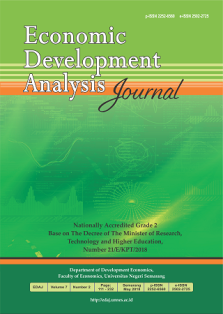Happiness Index in ASEAN-9 2015-2021: Macroeconomic and Demographic Perspectives
Abstract
The ASEAN happiness index is low compared to the world happiness index because it was ranked 6th out of 10 other regions in 2021. From Frey's theory perspective, research on the happiness index in ASEAN is needed using economic and non-economic variables. Therefore, this research aims to analyze the effect of GDP per capita, inflation, population density, and dependency ratio on the happiness index in ASEAN-9 and examines the most influential variables. The secondary data was obtained from the World Happiness Report in the Sustainable Development Solutions Network, the World Bank, and the Asian Development Bank. Data were analyzed using panel regression with the r1andom effect model method selected. Found that GDP per capita, inflation, population density, and dependency ratio simultaneously affect the happiness index in ASEAN-9. Partially, GDP has a positive and significant effect on the happiness index in ASEAN-9. Meanwhile, inflation, population density, and dependency ratio are not significant to the happiness index in ASEAN-9. GDP per capita is the most influential variable to the happiness index in ASEAN-9. The finding is that during 2015-2021, in ASEAN-9 countries, there has been GDP per capita growth of 23%, with the average happiness index increasing from 5,339 to 5,431. The implication is that each government of ASEAN countries needs to pay attention to efforts to increase per capita income so that ASEAN people can live more prosperously and happily.


